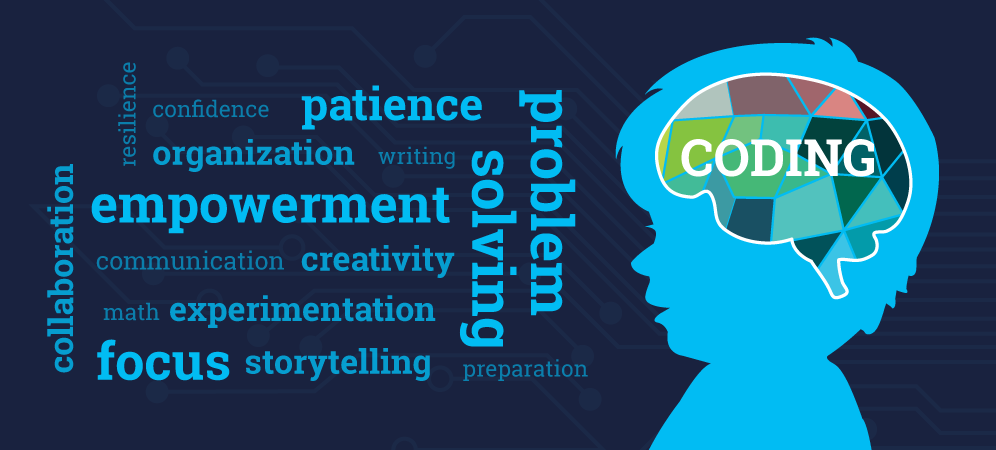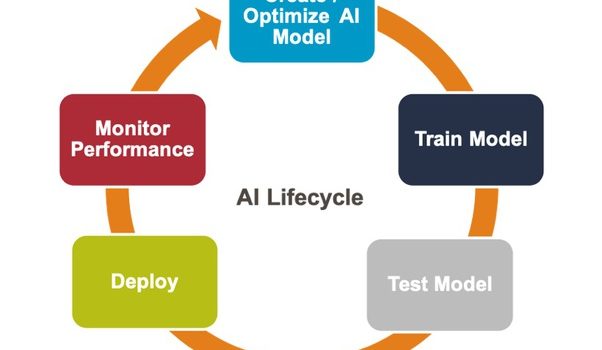What is AI?
AI (Artificial Intelligence) is the ability of a machine to perform cognitive functions as humans do, such as perceiving, learning, reasoning and solving problems. The benchmark for AI is the human level concerning in teams of reasoning, speech, and vision.
Introduction to AI Levels
- Narrow AI: A artificial intelligence is said to be narrow when the machine can perform a specific task better than a human. The current research of AI is here now
- General AI: An artificial intelligence reaches the general state when it can perform any intellectual task with the same accuracy level as a human would
- Strong AI: An AI is strong when it can beat humans in many tasks
Nowadays, AI is used in almost all industries, giving a technological edge to all companies integrating AI at scale. According to McKinsey, AI has the potential to create 600 billions of dollars of value in retail, bring 50 percent more incremental value in banking compared with other analytics techniques. In transport and logistic, the potential revenue jump is 89 percent more.
Concretely, if an organization uses AI for its marketing team, it can automate mundane and repetitive tasks, allowing the sales representative to focus on tasks like relationship building, lead nurturing, etc. A company name Gong provides a conversation intelligence service. Each time a Sales Representative make a phone call, the machine records transcribes and analyzes the chat. The VP can use AI analytics and recommendation to formulate a winning strategy.
In a nutshell, AI provides a cutting-edge technology to deal with complex data which is impossible to handle by a human being. AI automates redundant jobs allowing a worker to focus on the high level, value-added tasks. When AI is implemented at scale, it leads to cost reduction and revenue increase.
A brief History of Artificial Intelligence
Artificial intelligence is a buzzword today, although this term is not new. In 1956, a group of avant-garde experts from different backgrounds decided to organize a summer research project on AI. Four bright minds led the project; John McCarthy (Dartmouth College), Marvin Minsky (Harvard University), Nathaniel Rochester (IBM), and Claude Shannon (Bell Telephone Laboratories).
The primary purpose of the research project was to tackle “every aspect of learning or any other feature of intelligence that can in principle be so precisely described, that a machine can be made to simulate it.”
The proposal of the summits included
- Automatic Computers
- How Can a Computer Be Programmed to Use a Language?
- Neuron Nets
- Self-improvement
It led to the idea that intelligent computers can be created. A new era began, full of hope – Artificial intelligence.
Type of Artificial Intelligence
Artificial intelligence can be divided into three subfields:
- Artificial intelligence
- Machine learning
- Deep learning

Machine Learning
Machine learning is the art of study of algorithms that learn from examples and experiences.
Machine learning is based on the idea that there exist some patterns in the data that were identified and used for future predictions.
The difference from hardcoding rules is that the machine learns on its own to find such rules.
Deep learning
Deep learning is a sub-field of machine learning. Deep learning does not mean the machine learns more in-depth knowledge; it means the machine uses different layers to learn from the data. The depth of the model is represented by the number of layers in the model. For instance, Google LeNet model for image recognition counts 22 layers.
In deep learning, the learning phase is done through a neural network. A neural network is an architecture where the layers are stacked on top of each other.
AI vs. Machine Learning
Most of our smartphone, daily device or even the internet uses Artificial intelligence. Very often, AI and machine learning are used interchangeably by big companies that want to announce their latest innovation. However, Machine learning and AI are different in some ways.
AI- artificial intelligence- is the science of training machines to perform human tasks. The term was invented in the 1950s when scientists began exploring how computers could solve problems on their own.

Artificial Intelligence is a computer that is given human-like properties. Take our brain; it works effortlessly and seamlessly to calculate the world around us. Artificial Intelligence is the concept that a computer can do the same. It can be said that AI is the large science that mimics human aptitudes.
Machine learning is a distinct subset of AI that trains a machine how to learn. Machine learning models look for patterns in data and try to conclude. In a nutshell, the machine does not need to be explicitly programmed by people. The programmers give some examples, and the computer is going to learn what to do from those samples.
Where is AI used? Examples
Now in this AI for beginners tutorial, we will learn various applications of AI:
AI has broad applications-
- Artificial intelligence is used to reduce or avoid the repetitive task. For instance, AI can repeat a task continuously, without fatigue. In fact, AI never rests, and it is indifferent to the task to carry out
- Artificial intelligence improves an existing product. Before the age of machine learning, core products were building upon hard-code rule. Firms introduced artificial intelligence to enhance the functionality of the product rather than starting from scratch to design new products. You can think of a Facebook image. A few years ago, you had to tag your friends manually. Nowadays, with the help of AI, Facebook gives you a friend’s recommendation.
AI is used in all the industries, from marketing to supply chain, finance, food-processing sector. According to a McKinsey survey, financial services and high tech communication are leading the AI fields.

Why is AI booming now?
Now in this Artificial Intelligence testing tutorial, let’s learn why AI is booming now. Let’s understand by the below diagram.

A neural network has been out since the nineties with the seminal paper of Yann LeCun. However, it started to become famous around the year 2012. Explained by three critical factors for its popularity are:
- Hardware
- Data
- Algorithm
Machine learning is an experimental field, meaning it needs to have data to test new ideas or approaches. With the boom of the internet, data became more easily accessible. Besides, giant companies like NVIDIA and AMD have developed high-performance graphics chips for the gaming market.
Hardware
In the last twenty years, the power of the CPU has exploded, allowing the user to train a small deep-learning model on any laptop. However, to process a deep-learning model for computer vision or deep learning, you need a more powerful machine. Thanks to the investment of NVIDIA and AMD, a new generation of GPU (graphical processing unit) are available. These chips allow parallel computations. It means the machine can separate the computations over several GPU to speed up the calculations.
For instance, with an NVIDIA TITAN X, it takes two days to train a model called ImageNet against weeks for a traditional CPU. Besides, big companies use clusters of GPU to train deep learning model with the NVIDIA Tesla K80 because it helps to reduce the data center cost and provide better performances.

Data
Deep learning is the structure of the model, and the data is the fluid to make it alive. Data powers the artificial intelligence. Without data, nothing can be done. Latest Technologies have pushed the boundaries of data storage. It is easier than ever to store a high amount of data in a data center.
Internet revolution makes data collection and distribution available to feed machine learning algorithm. If you are familiar with Flickr, Instagram or any other app with images, you can guess their AI potential. There are millions of pictures with tags available on these websites. Those pictures can be used to train a neural network model to recognize an object on the picture without the need to manually collect and label the data.
Artificial Intelligence combined with data is the new gold. Data is a unique competitive advantage that no firm should neglect. AI provides the best answers from your data. When all the firms can have the same technologies, the one with data will have a competitive advantage over the other. To give an idea, the world creates about 2.2 exabytes, or 2.2 billion gigabytes, every day.
A company needs exceptionally diverse data sources to be able to find the patterns and learn and in a substantial volume.

Algorithm
Hardware is more powerful than ever, data is easily accessible, but one thing that makes the neural network more reliable is the development of more accurate algorithms. Primary neural networks are a simple multiplication matrix without in-depth statistical properties. Since 2010, remarkable discoveries have been made to improve the neural network
Artificial intelligence uses a progressive learning algorithm to let the data do the programming. It means, the computer can teach itself how to perform different tasks, like finding anomalies, become a chatbot.
Summary
Artificial intelligence and machine learning are two confusing terms. Artificial intelligence is the science of training machine to imitate or reproduce human task. A scientist can use different methods to train a machine. At the beginning of the AI’s ages, programmers wrote hard-coded programs, that is, type every logical possibility the machine can face and how to respond. When a system grows complex, it becomes difficult to manage the rules. To overcome this issue, the machine can use data to learn how to take care of all the situations from a given environment.
The most important features to have a powerful AI is to have enough data with considerable heterogeneity. For example, a machine can learn different languages as long as it has enough words to learn from.
AI is the new cutting-edge technology. Ventures capitalist are investing billions of dollars in startups or AI project. McKinsey estimates AI can boost every industry by at least a double-digit growth rate.

